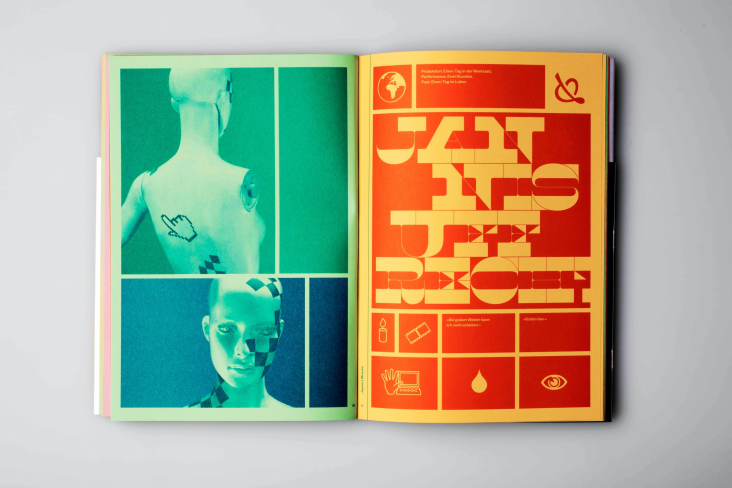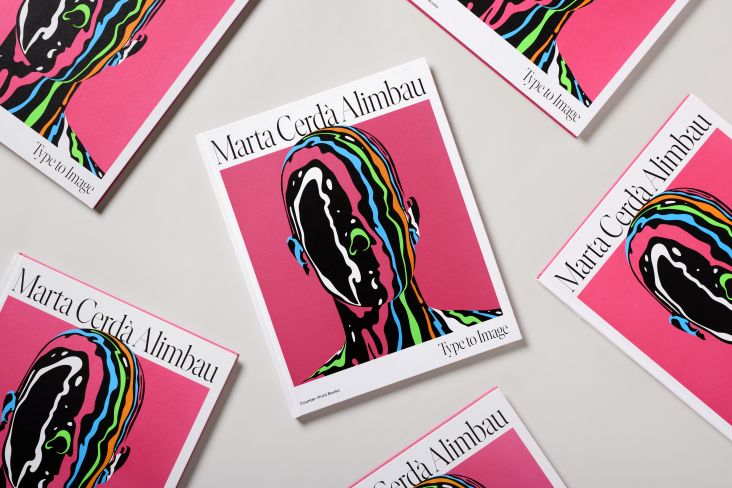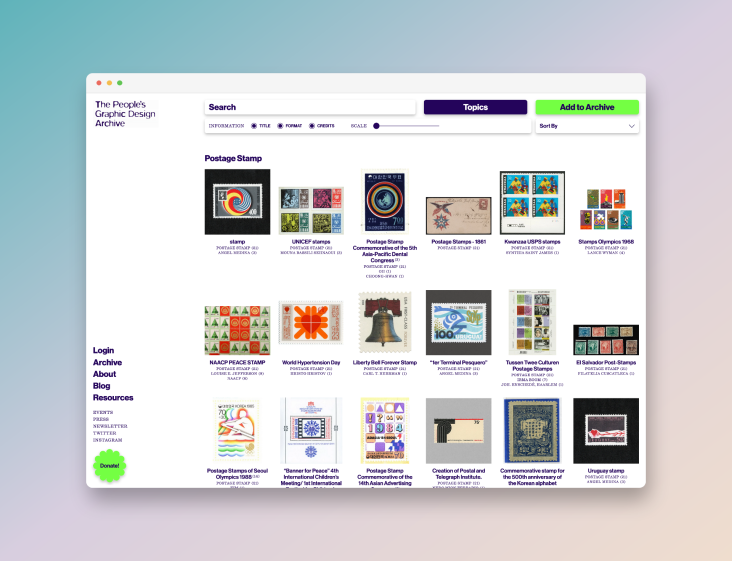Seven deadly-difficult client types, and how to deal with them
When it comes to working for brands and companies, have you ever had moments of tearing your hair out? Here, creatives share their client horror stories and offer tips and advice for anyone encountering the same situation.

Image licensed via Adobe Stock
It's almost Halloween, a time of spooks, sprites and devils. But you don't need to look at the world of the supernatural to give yourself a fright. Anyone who's worked as a creative freelancer will have experienced clients with monstrous qualities, ranging from the power-mad to the downright criminal.
Don't get us wrong: most clients are decent human beings. And even when they're being particularly difficult, it's more a case of poor communication and lack of understanding of what freelancers actually do. Part of our job is to meet them halfway, guide them through the process, and put systems in place, including watertight contracts, so everyone understands their responsibilities.
"I find that the best way to deal with clients is to be clear on your plan and way of working while also being clear on what's expected of them," says creative director Martin Homent. "I'm my experience, most clients seem like a nightmare because they don't quite understand what the process is and don't want to show themselves up by stating they don't know something.
"Creativity can sometimes seem like a complete mystery to some clients," he adds. "Even the ones who are trained marketers. So always let them know your process, and guide them with where you are along the way."
This approach will work in the vast majority of cases. But unfortunately, not all. Because the sad truth is that some clients are pretty impossible. In this article, we identify seven types of deadly-difficult clients and offer advice on how to deal with them.
1. The ego drunk on power
This type of client isn't just misguided or out of their depth; they're fundamentally unpleasant and enjoy lording themselves over others.
Manchester-based photographer Enna Bartlett offers a typical example. "At an event where I was the photographer, one of the attendees kept putting their hand in the air, clicking their fingers and going 'You, photographer, we need photos'. Even though they weren't anything to do with the team who briefed me on the job."
Martin Homent shares a similar tale. "I once had a client who stopped our presentation two minutes in to ask who we were and why we were there," he recalls. "For context, he was new, and our agency had worked with his company for over a year. He then insisted we sat outside while he discussed our work with his team and made them deliver the feedback while he was silent."
When you get treated this way, keeping your emotions in check and staying professional is difficult. Sometimes, though, it's possible to cope with an oversized ego simply by appealing to that ego.
Illustrator Ben Rothery describes such a client. "She's like Anna Wintour x Ursula, the sea witch," he says. "She screams, swears and changes her mind a lot… she's a real peach. But she generally gets managed by telling her that any idea we want to push through was originally hers."
2. The zero-integrity
Ego-driven is one thing, but what's even worse is when a client lacks all integrity. Artist and Illustrator Carina Lindmeier gives a shocking example. "Once, a client tried to force me to copy a fellow illustrator," she explains. "I said NO, even though the budget was good. It's important to always stay true to your values."
When illustrator Sarah J Coleman, aka Inkymole, was in a similar situation, she found sticking to her guns and having representation helped resolve the issue. "The client relentlessly repeated: 'If you could just make it look more like X's work'," she recalls. "To which I relentlessly replied, 'Nope. You hired me: if you wanted X, you should have hired X.' Ultimately, my agent bollocked them, called time, and I got paid in full."
When a client has absolutely no scruples, though, often the only thing to do is say goodbye. Illustrator Rachael Presky gives a startling example. "I had someone say, 'I don't want to sound bad, but I only want skinny European people – meaning white – in the illustrations because that's what we all aspire to'," she says. "I walked away very quickly after that."
Unfortunately, walking isn't always the end of the matter. "We had a client that wanted to use images from Google despite copyright licences," says artist Ranjit Sihat. "We were met with harassment, so politely told her we could not work with her, didn't take any more payment, and returned all her prep work. She threatened to take us to court. Luckily, because we stopped replying to the harassing emails, the client stopped."
3. The scammer
We've all had this happen. A client commissions you to do work, then deny you payment on grounds so ridiculous it would be funny if it didn't leave you out-of-pocket and worried about how to afford your food, rent and bills.
"I had a client that asked me to vectorise their sketch into a useable logo, then refused to pay me as they weren't happy with the design," recalls illustrator and album cover artist Paul Phillips, aka True Spilt Milk. "Even though it was their own design!"
Art director Tim Easley tells an equally shocking tale. "One client of mine lied about their identity and stole loads of my work for their own portfolio, then didn't pay me," he explains. "I had to make a small claim against them. And so my tip in this situation is: don't waste your time chasing things up politely when it's obvious they won't pay."
Designer James Kindred highlights another common way freelancers are scammed. "Once, we had a sizeable pitch for a local transport business," he explains. "We were told we had won the pitch, but they wouldn't pay us for the work as it had 'already been done and they didn't need any changes'."
Dishonest clients pop up everywhere, it seems. Currently art director at Apple Music, Sanchit Sawaria once had a client who asked for a 'Covid Discount'. "Then, in the middle of the project, during a candid conversation, they slipped up that their company wasn't affected by Covid," Sanchit reveals. "Later, they changed the brief in the middle of the project. I lost money and, most importantly, time."
The biggest takeaway from such stories is that if a client seems off in any way, it's worth following your gut and checking them out. "I was recently approached to work for free – in exchange for publicity – to an audience that's not remotely like mine," says artist Berenice Howard-Smith. "So I looked up the parent company, who have filed at Companies House, and it became clear that they make enough profit to pay me if I decide to work with them. Which I do not."
She adds this tip to avoid scam clients. "My code of conduct has reduced the chancers, which means the above is very rare," Berenice says. "This sets out when and how I communicate – email, Zoom, never WhatsApp – as well as my ethical approach, expectations, and other FAQs. It sets us all up for success in a non-aggressive way."
4. The terminally lazy
Clients who purposely set out to screw you are just evil. But there are also clients who don't pay you simply because they can't be bothered with the admin.
"I once waited six months for payment from a job with a major sports brand," says photographer Steven Jones. "I eventually found that the person I worked for, who'd since left the company, had never bothered submitting my invoice. Luckily I had a PO, so eventually, I got paid. Always get a PO number!"
Graphic designer David Dooley gives an even more exasperating example. "I once worked freelance with a company for a few months and had trouble getting payment from them," he recalls. "I ended up joining them full-time, and it STILL took four months to get a bunch of invoices paid, despite me sitting beside the accounts department the whole time."
And spare a thought for one-man creative studio Stckmn. "I took a nightmare client to court for using all the project assets but refusing to pay," he says. "After two years of back and forth, court appearances, legal fees, I won the case… then the client died."
5. The wallet-clutcher
Another type of client thinks they're entitled to withhold cash simply, well, because they want to. Illustrator Lucy Engelman offers an example. "I delivered six different iterations of one project. The client refused to pay because they 'didn't like how it turned out', then insulted me until I stopped asking for payment. In future, I had to add 'Client has to pay for finished work regardless of personal feelings about the work' to my contract. Every misadventure makes the next one a little easier."
Often these problems come down to client education. But sometimes you really have to wonder what planet people are on. Take this anecdote from brand and editorial designer Luke Tonge." A client signed off a print project from their ill-timed winter beach break," he remembers. "Then, when they got home, and the publication arrived, they decided they didn't like it anymore and expected me to rework and pay for a full reprint. That alone would have cost more than my tiny fee. I explained politely: no way José!"
Similarly, Sarah J Coleman namechecks: "The client who let me finish the many lettering pieces in a project, only to invoice the agreed fee, and be met with 'I'm not paying that, for what's basically glorified graffiti'. I read him a Guide To Lettering For The Hard-Of-Thinking, and yes, he paid in the end." If you ever find yourself in a similar situation, read our article on How to get paid by clients.
6. The utterly baffling
Nightmarish clients come in all shapes and sizes; some are just plain weird. Branding, website and interaction designer Neil Holroyd recalls how: "Once had a client tell me the circles on the design presented weren’t round enough."
Graphic and book designer Nathan Ryder can match that. "I had a client who didn't like lowercase L's," he explains. "So he used uppercase i's throughout four manuscripts of over 160k-180k words in each. Not as straightforward as 'just' doing a find and replace, I can tell you!" But Nathan had a strategy for dealing with such clients. "As a youth, really difficult clients got 'hidden' extras in their artwork."
And how's this for an informed critique? "I was working on illos for a book," recalls illustrator Maggie Stephenson. "Everything was going well, a TON of time invested, all illos approved. Until the client's kid, who was about eight or so, wanted it all changed. That was a quick farewell."
7. The totally inappropriate
Most advice on dealing with clients assumes they are, under the surface, reasonable human beings. But sometimes, that just isn't so.
Visual designer Anna Negrini gives an example of how client behaviour can tip from being 'difficult' to 'weirdly inappropriate'. "There was one client who used to leave feedback as vocal messages on WhatsApp, despite me asking him to write emails instead," she explains. "There were tons of these messages, mixed with the reportage of his wonderful holiday in Botswana, so I had to listen to all of them."
And just hear what happened to Tim Easley. "I had a guy approach me to do some work by drawing one of my illustrations himself, commenting on how it looked like his version had a cock, then offered to buy me cupcakes and take me to Rome," he explains. "He then stalked me at a meetup I'd said I was going to on Twitter but stayed a good hour or so before he actually said who he was. I refused to work with him.
"My main tip here," adds Tim, "is that if there are red flags, it's best not to work with someone. Either that or get payment up front and agree on terms in writing, so you're not losing anything from it. And remember, you can fire a client if they're being a nightmare."
Here's when the joy of freelancing really kicks in because you always have the option of just walking away. After all, no money in the world is worth being made to feel worthless. If you decide on that option, read our article on How to dump a difficult client for more advice.

























